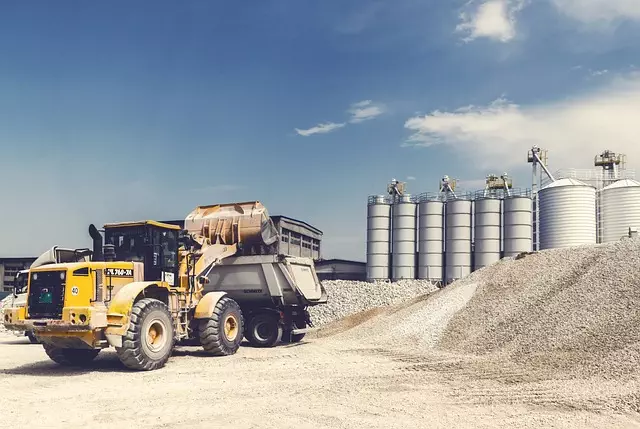Industrial Hygiene is a critical practice for managing chemical risks in industrial settings, prioritizing worker safety. It involves identifying and assessing hazards through understanding chemicals, their properties, and exposure routes. Key steps include hazard recognition, exposure monitoring to measure chemical concentrations, and informed decision-making. Effective controls, such as improved ventilation, engineering controls, PPE, and safe work practices, are implemented to minimize or eliminate risks associated with chemical exposure. Regular training and education empower employees to manage chemicals safely, enhancing operational efficiency and regulatory compliance.
Chemical management is a vital aspect of any industrial setting, ensuring worker safety and environmental protection. This comprehensive guide explores essential practices for managing hazardous chemicals. From understanding industrial hygiene, which forms the foundation, to hazard recognition and assessment, exposure monitoring techniques, and implementing safe work practices, each step is crucial in mitigating risks. We delve into training programs that empower employees and highlight regulatory compliance strategies, ensuring a dynamic approach to chemical management.
- Understanding Industrial Hygiene: The Foundation of Chemical Management
- Hazard Recognition and Assessment: Unveiling Potential Risks
- Exposure Monitoring Techniques: Tracking Chemical Interactions
- Implementing Safe Work Practices for Effective Chemical Control
- Training and Education: Empowering Employees in Chemical Management
- Regulatory Compliance and Continuous Improvement Strategies
Understanding Industrial Hygiene: The Foundation of Chemical Management
Industrial Hygiene is a cornerstone in the realm of chemical management, providing the foundation for ensuring worker safety and health in industrial settings. It involves the scientific discipline of recognizing, assessing, and controlling hazards present in the work environment, with a specific focus on chemicals. By implementing robust industrial hygiene practices, organizations can effectively manage risks associated with chemical exposure. This includes identifying potential sources of harm, evaluating the extent of hazard, and employing strategies to minimize or eliminate risks altogether.
The process begins with thorough hazard recognition and assessment, where experts identify chemicals, their properties, and possible routes of exposure. Exposure monitoring is a critical step, involving the measurement of chemical concentrations in the air or other mediums to determine worker exposure levels. These data are then used to inform decision-making regarding necessary controls, such as improving ventilation systems, implementing engineering controls, providing personal protective equipment (PPE), and establishing safe work practices.
Hazard Recognition and Assessment: Unveiling Potential Risks
Hazard Recognition and Assessment is a critical step in chemical management, as it involves identifying and evaluating potential risks associated with chemical substances. This process is pivotal in ensuring industrial hygiene and worker safety in industrial settings. By meticulously scrutinizing chemical properties, potential pathways of exposure, and health effects, organizations can unveil hidden dangers that might otherwise go unnoticed.
Effective hazard recognition begins with a comprehensive review of available data on the chemicals in use, including their Safety Data Sheets (SDS). This is followed by a thorough assessment of workplace conditions where these chemicals are handled, stored, or disposed of. Exposure monitoring plays a significant role here, helping to quantify and qualify employee exposure levels and ensuring compliance with occupational safety standards. Regular audits and inspections further reinforce this process, allowing for timely updates and adjustments in risk management strategies as new information emerges.
Exposure Monitoring Techniques: Tracking Chemical Interactions
In the realm of chemical management, exposure monitoring is a cornerstone of ensuring worker safety and environmental integrity. Industrial hygiene practices heavily rely on sophisticated techniques to track chemical interactions, enabling effective hazard recognition and assessment. These methods are essential for identifying potential risks associated with various chemicals in industrial settings.
Advanced exposure monitoring techniques involve real-time data collection and analysis to measure airborne contaminants, vapor concentrations, and other chemical releases. By utilizing tools such as sampling probes, personal protective equipment (PPE), and advanced analytical instruments, professionals can gain a comprehensive understanding of chemical distributions within a workplace. This information is pivotal for implementing appropriate control measures, designing safe work practices, and adhering to regulatory standards in the interest of public health and safety.
Implementing Safe Work Practices for Effective Chemical Control
Implementing safe work practices is paramount for effective chemical control in any industrial setting. It begins with thorough hazard recognition and assessment, where professionals identify potential risks associated with various chemicals and processes within their facility. By understanding these hazards, companies can establish appropriate control measures to minimize exposure among employees.
Industrial hygiene plays a pivotal role in this process by ensuring that workplace environments are safe and healthy. This involves regular exposure monitoring to evaluate air quality, check for chemical leaks or spills, and track employee contact with hazardous substances. Such proactive steps not only protect workers’ health but also comply with regulatory standards, fostering a culture of safety in the handling and management of chemicals.
Training and Education: Empowering Employees in Chemical Management
Training and Education play a pivotal role in empowering employees to take charge of chemical management within their workplaces. By providing comprehensive instruction on industrial hygiene, hazard recognition and assessment, and exposure monitoring, organizations can foster a culture of safety awareness. Educated staff are better equipped to identify potential risks, understand the properties of various chemicals, and implement effective control measures. This proactive approach not only protects employees from hazardous exposures but also contributes to improved operational efficiency and regulatory compliance.
Regular training sessions, workshops, and online modules ensure that chemical management practices stay current with evolving industry standards and best practices. These educational initiatives should cover a range of topics, including safe handling procedures, personal protective equipment (PPE) selection and use, emergency response protocols, and continuous improvement strategies. Through ongoing learning, employees gain the confidence to make informed decisions, ask pertinent questions, and actively participate in creating a safer work environment.
Regulatory Compliance and Continuous Improvement Strategies
In the realm of chemical management, regulatory compliance is a cornerstone for any organization aiming to maintain a safe working environment. Staying aligned with industrial hygiene standards and guidelines is paramount. Companies must employ robust processes for hazard recognition and assessment to identify potential risks associated with chemicals in their facilities. This proactive approach involves meticulous evaluation of chemical compositions, exposure monitoring, and understanding the unique challenges posed by each substance. By implementing these strategies, organizations can ensure they meet or exceed legal obligations set forth by regulatory bodies.
Continuous improvement is an integral part of this process. Regular reviews and updates to safety protocols should be scheduled, incorporating lessons learned from incident investigations and exposure monitoring data. This ongoing cycle of evaluation and refinement ensures that chemical management practices remain dynamic, responsive, and aligned with the latest scientific knowledge in industrial hygiene.


